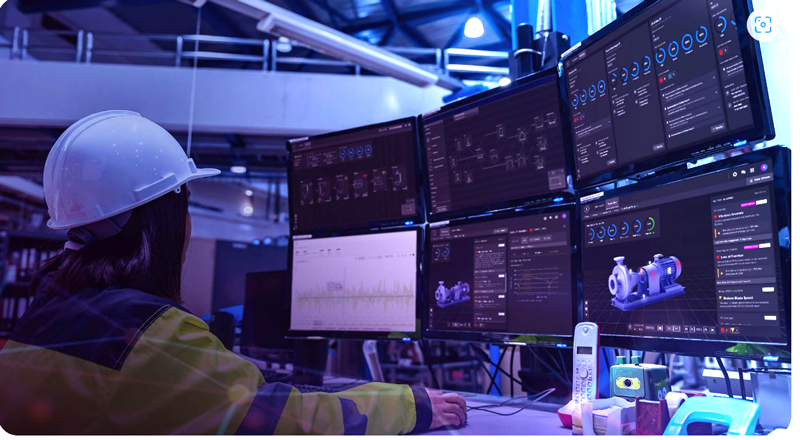 We’ve all read the headlines around the promises artificial intelligence (AI) makes to save the day in almost every industry. AI delivers profits, cuts costs, optimizes production and aligns resources, to name a few.
We’ve all read the headlines around the promises artificial intelligence (AI) makes to save the day in almost every industry. AI delivers profits, cuts costs, optimizes production and aligns resources, to name a few.
Yet these impacts only scratch the surface when looking at AI’s potential to disrupt renewable energy and solve data and operational variability challenges.
Every variation of renewable power relies on large amounts of assets, numerous conditions and massive amounts of data. From solar, wind and hydro energy to tidal, geothermal and biomass energy, these variables underscore the complexity of renewables, making system optimization and cost reduction seemingly impossible.
The current energy production in renewables lacks accessible information for real time, predictive insights and actions. In many cases, control changes are still manual and based on limited data. Engineers and operators also often need help in implementing their ideas for improving operations.
Renewables are often a complex environment to update control strategies based on changing processes and asset conditions.
Data Wrangling Made Easy
Integrating AI into the renewables sector leads to significant transformations in company operations, allowing increased efficiency, reduced costs and improved environmental impact.
How? Intelligent data.
AI facilitates how and when technical staff acquires, understands and acts on data. AI can augment engineers with up-to-the-second data analysis at the asset level and back to the system level.
With these capabilities at hand, operators and engineers benefit from the following:
1. Predictive Maintenance
One of the significant benefits of AI in the renewable sector is predictive maintenance. Wind turbines are subject to wear and tear, which can cause breakdowns, resulting in maintenance costs and reduced energy production. With AI, wind turbines are monitored in real time, and predictive maintenance can be performed before a failure occurs.
With the help of sensors and AI algorithms, it is possible to predict when equipment will fail before it does. This enables companies to schedule maintenance activities in advance, saving time and money, and reducing downtime, while increasing the efficiency of operations and energy production.
Finally, AI analyzes vast amounts of data to learn from, making predictions more accurate with each iteration.
2. Smart Grid Management
Renewable energy sources such as wind and solar power are intermittent, which makes it challenging to manage the energy grid. AI helps centralize and act on the data, with user support, to make management more effective. This, in turn, makes management more responsive to changing conditions in population demands for energy.
3. Supply Chain Management
AI can optimize the supply chain by analyzing inventory levels, delivery times, and demand data to minimize costs and improve efficiency.
4. Safety and Environmental Monitoring
AI monitors safety and environmental conditions in real time, alerting workers to potential hazards and reducing the risk of accidents.

But Wait, There’s More
In renewables, AI enables engineers to take their ideas and turn them into actions. Some solutions leverage AI automation from edge to cloud to empower engineers and operators to find new optimization solutions for operational production.
They leverage digital process twins to bridge gaps by providing real time insights. These capabilities also empower engineers to monitor and make control changes in real time and further prevent future failures that tie underperforming assets to potential energy savings.
It is also essential for renewable energy solutions to deliver quantitative results from the value proposition of using energy stemming from a natural source that is replenished at a higher rate than used. AI helps demonstrate the value by providing the current carbon impact of all renewable processes. This includes recommending new carbon mitigation opportunities in existing systems and delivering a unique solution to address environmental, social and governance (ESG) goals that:
- Tie underperforming assets to potential energy savings.
- Connect detected and predicted asset failure modes to potential emissions.
- Provide control loop optimization to mitigate risks and further reduce wasted energy.
Overall, AI has the potential to revolutionize the energy industry, increasing efficiency, reducing costs, and improving safety and environmental performance.
Remember those headlines around the promises artificial intelligence makes to save the day in almost every industry? With the right approach and solutions, AI in renewables can go well beyond the headlines and into a new beginning of unlimited energy potential.
With over 18 years of experience, commitment to excellence, and navigating fast-paced environments, Cita Geiggar leads the company with go-to-market initiatives, brand development, partnerships and engagement to drive growth and impact with Kelvin. Her expertise in working with global strategic partners has helped companies to successfully execute their digital transformation journey and sustainability in the market. Completing her PhD from Northcentral University, Geiggar holds an MBA from the University of Phoenix and a BA in Business Communications from the University of Washington. Geiggar enjoys spending time and playing sports with her husband and three children.
Oil and gas operations are commonly found in remote locations far from company headquarters. Now, it's possible to monitor pump operations, collate and analyze seismic data, and track employees around the world from almost anywhere. Whether employees are in the office or in the field, the internet and related applications enable a greater multidirectional flow of information – and control – than ever before.


